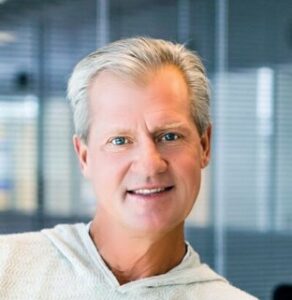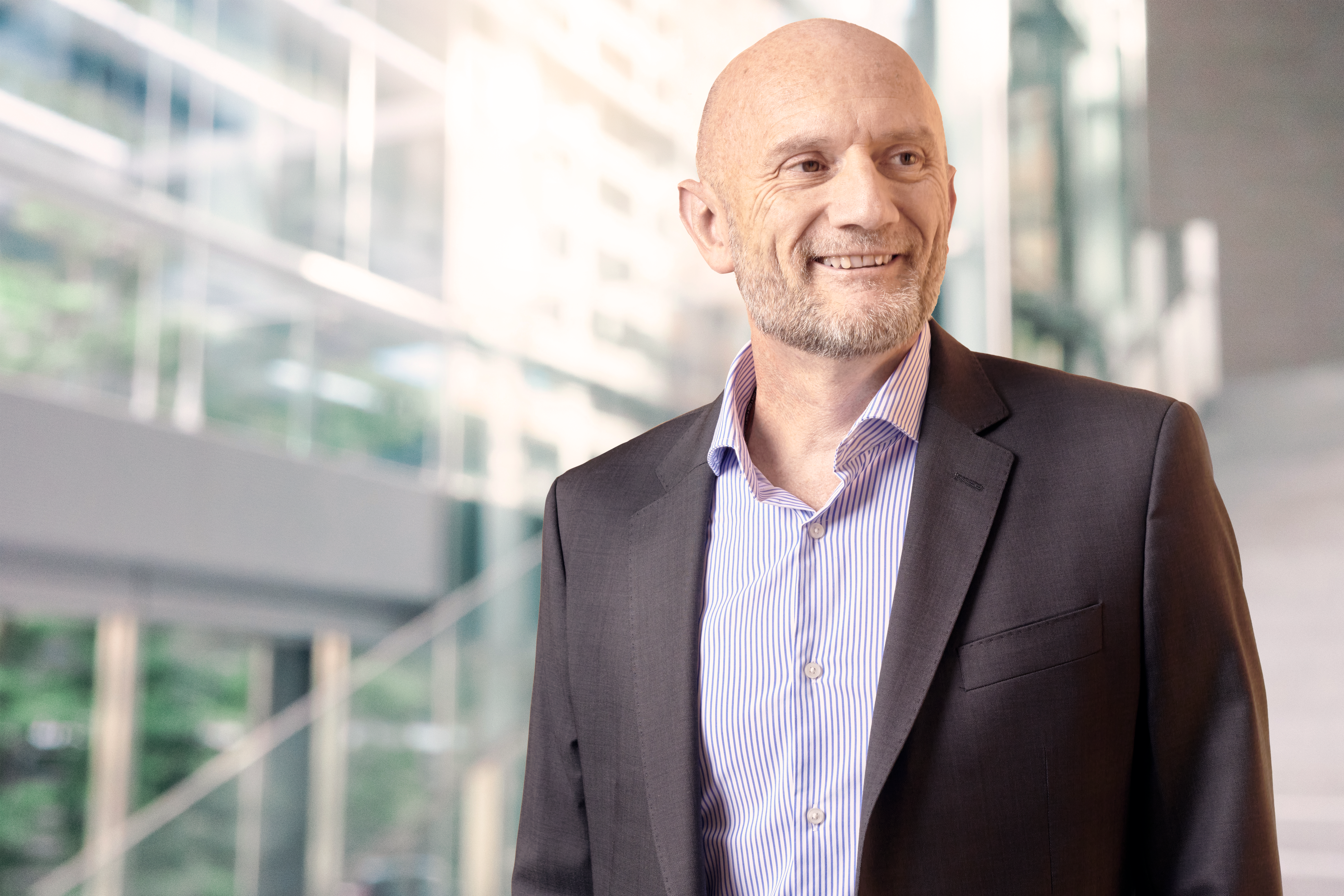Travelport CEO Greg Webb on Winning with Culture
When Greg Webb stepped into the CEO role at Travelport in August, he inherited a weary organization. Months before, two equity firms had bought the tech company that connects travel providers such as airlines and hotels with online and offline travel agencies. The move turned the organization private only five years after it had gone public. “This is a company that has been through a lot of change,” Mr. Webb says.
All that disruption had taken its toll on the organization, based about 20 miles outside of London in the village of Langley. Recent customer losses were threatening the company’s standing in the marketplace. Travelport was also struggling to keep up with shifting tides as more customers demanded mobile-first transactions. With an average of more than 1 billion daily transactions, the stakes were high.
To adapt to new conditions, the company would need to rely on the commitment of its employees. However, many workers felt wounded by the previous private ownership’s emphasis on cost-cutting, which had resulted in layoffs. “When I got here, there was no question that employees were on pins and needles,” Mr. Webb says. “They were waiting for the other shoe to drop.”
He had learned from experience, including a lengthy stint at one of Travelport’s main competitors, Sabre, that the key to turning around the organization would come down to culture. “You can execute everything right, but if you don’t have a good culture, you won’t be successful,” he says. “Culture wins every time.”
 In his second week on the job, Mr. Webb commissioned Insigniam to conduct a thorough cultural survey of Travelport employees. A few weeks later, he and his executive leadership team met off-site to review the survey results. One takeaway was clear: If any change was going to be truly effective, it could not come only from the top. So Mr. Webb and his executive team met again with a broader group of leaders across the organization, some of whom were two tiers below Mr. Webb’s direct reports.
In his second week on the job, Mr. Webb commissioned Insigniam to conduct a thorough cultural survey of Travelport employees. A few weeks later, he and his executive leadership team met off-site to review the survey results. One takeaway was clear: If any change was going to be truly effective, it could not come only from the top. So Mr. Webb and his executive team met again with a broader group of leaders across the organization, some of whom were two tiers below Mr. Webb’s direct reports.
On the first day of an intensive two-day meeting, they addressed the biggest challenge to the company’s future: its recent past. “It was extraordinarily important for us to look at the history so we could begin to move forward,” he says.
There were a host of challenges: The company culture was siloed. Employees felt demoralized. Many complained that the previous leadership had never really considered their feedback. These sentiments contributed to an overall attitude that was stymieing Travelport’s growth. “The company’s future was bright,” says Insigniam partner Scott Beckett. “People just had to allow themselves to believe that.”
“Employees did not feel empowered and, because of that, did not feel accountable for their work,” Mr. Webb says. “We had employees who loved the company but felt it didn’t matter what they did because nothing would change, so they came in at 9 a.m. and left at 5 p.m. and didn’t try to push the company forward. That’s not an organizational feeling you want to have.”
Mr. Webb knew he would have to begin a cultural turnaround by dismantling old habits and assumptions. Instead of focusing on hierarchical, top-down leadership, Travelport needed leadership that prioritized engagement with employees. A more-attentive approach could address a troubling pattern that plagues many well-established companies: A handful of top performers drive the company forward while too many others coast along. “Employees have to know it’s not OK to be OK,” Mr. Webb says.
For everyone to buy into this cultural shift, however, they would first have to see it modeled by the executive team. “Employees have to see changes in behavior at the top,” Mr. Webb says. “Everyone has to see the company’s core values through the way the leadership team acts.” Share on X
“You can execute everything right, but if you don’t have a good culture, you won’t be successful. Culture wins every time.” —Greg Webb, CEO, Travelport
Shouting From the Mountaintop
At the end of the leadership meeting, Mr. Webb gave each leader an assignment: Email him two things they would do differently moving forward. One senior leader replied that she would no longer shrink into the background but would instead work to be more visible. The employee has done precisely that, spending less time in her office and more time talking with her team. “Greg and his leadership team are building a corporate culture that calls for the very best contribution from each of its employees,” says Mr. Beckett.
Members of the executive team changed their behavior, too. The previous leadership usually held infrequent one-on-one or small-group meetings. Now the entire team meets together, in person, on a weekly basis, and has committed to setting aside a few weeks in the year during which to convene in the same office so that employees can see them all together. To drive this transparency home, each C-suite leader has an all-employee town hall to talk about their areas of focus—breaking down a siloed culture where one department did not know what the others did or how all team members contributed to the company’s success.
 But more meetings were only the beginning. In Mr. Webb’s first few months, six of his 11 executive team members changed. The turnover has brought fresh talent and a greater diversity of thought. But it also has boosted morale: Several leaders were internally promoted to their position—demonstrating to everyone in the organization that merit and dedication are rewarded.
But more meetings were only the beginning. In Mr. Webb’s first few months, six of his 11 executive team members changed. The turnover has brought fresh talent and a greater diversity of thought. But it also has boosted morale: Several leaders were internally promoted to their position—demonstrating to everyone in the organization that merit and dedication are rewarded.
To help propel the transformation, Mr. Webb has emphasized constant communication—“overcommunication,” he says. This is as much about frequency as substance. One of the first points he had to make was that the organization was no longer obsessed with cutting costs but instead was committed to investing in people and technology. “We’re not slashing and burning; we’re not cutting ourselves to grow,” he says. “I had to make sure that the leadership team and I communicated that right out of the gate.” He also instructed employees to ask their managers how they individually contributed to the organization if there was a lack of clarity on that point—the kind of admission that in the past might have meant being walked out the door, Mr. Webb notes.
With 5,000 employees in about 70 countries—many of whom work from home—communication did not just have to be robust; it had to be thoughtful, as well. “Trying to manage culture through a distributed work environment is one of our key challenges,” Mr. Webb says.
He found that in the past, Travelport’s leadership frequently communicated through long weekly e-newsletters or lengthy email chains—missives that few employees bothered to read. Seeing the problem, he commissioned his communications team to create two-minute videos that could appeal to the entire organization. The click-through rate for these videos is more than double that of the previous lengthy email announcements.
Travelport also plans to debut a podcast featuring Mr. Webb and other company leaders as well as external guests. Episodes will address new technologies being implemented, diversity and inclusion efforts, and project launches, among other topics. The podcast will take advantage of Mr. Webb’s informal and transparent style to communicate company strategy and priorities in an informative and entertaining way, according to the company.
“Employees have to see changes in behavior at the top. Everyone has to see the company’s core values through the way the leadership team acts.” —Greg Webb, CEO, Travelport
Writing Their Future
Travelport recognizes a need for collective effort to rise to the business and technological challenges it is contending with. “We’re currently No. 3 in a three-horse race—behind Sabre and Amadeus—so we have to get our people to believe we can win,” Mr. Webb says. Getting them there means he and his leadership team need to craft a narrative—one that employees embrace—about what the company must do to take the lead in the competitive marketplace. “If the employees don’t believe it, the market won’t believe it,” he says.
That story will describe Travelport’s journey through the industry’s swift technological changes. A lack of strategic investment had held the company back, but the organization sees promise in a new platform it has invested in that relies upon machine learning and artificial intelligence technologies. The platform, according to the company, will help Travelport produce faster and more accurate results from customer queries, winnowing billions of travel permutations for getting a traveler from point A to point B down to the most attractive and cost-effective itineraries—all within a second.
Travelport’s new story also will focus on new strategic objectives that Mr. Webb and his leadership team are rolling out. “Strategies can get too complex,” he says. “Even in a complex environment, simpler is better.” He adds: “We have to be able to tell our employees, ‘Here are the five things we’re focused on.’” Whatever the five things are, the strategy has to be clear and compelling for everyone—from those in the boardroom to entry-level employees and from people who have been with the company for 10 years to those who joined 10 days ago.
It was a transformation that Mr. Beckett witnessed firsthand. “Working at Travelport was like Potts’ chorus-line hypothesis,” he says, referring to how flocks of birds move in precise coordination. “Greg Webb is now getting them aligned around a potent vision and future.”
It is still early in the process, but Mr. Webb already has seen signs of positive change. “In my discussions with employees, they now have a much better understanding of how the company’s different areas come together to deliver success,” he says. And then there is the story that the numbers will tell: In 2019, Travelport began to turn around a decline and enjoyed market share gains.
This article appeared in the Spring 2020 issue of IQ Insigniam Quarterly, with the headline “Winning with Culture.” To begin receiving IQ, go here.



